Jeong Da-hye majored in sculpture, but ultimately decided to pursue horsehair craft, with a desire to explore its beauty and artistic potential. Her work is a modern aesthetic rendering of a Korean cultural tradition upheld for centuries. She began to draw international attention when she won the 2022 Loewe Foundation Craft Prize.
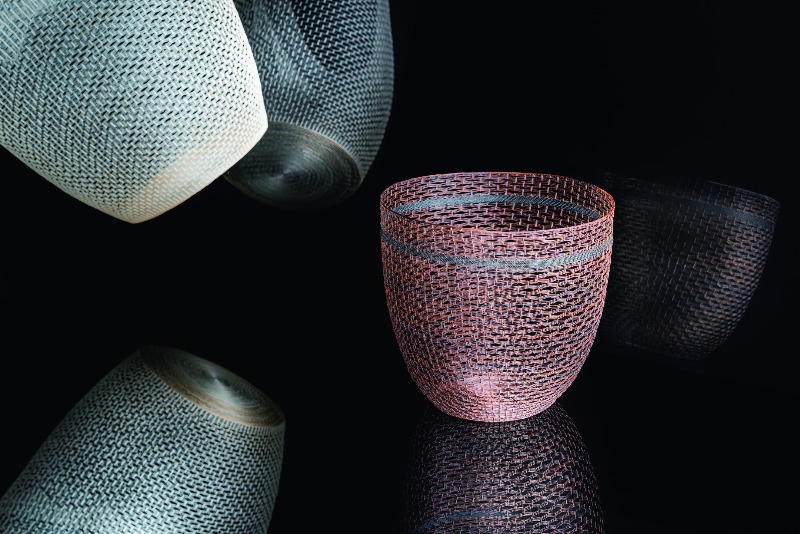
Jeong Da-hye’s horsehair baskets are inspired by prehistoric earthenware. From the mane or tail hair of a horse, horsehair can be white, brown, or black. It is soft and light but also tough; when it is used to form a three-dimensional shape, the resultingdoes not warp.
Courtesy of Soluna Craft Korea
In July 2022, the Seoul Museum of Craft Art drew more visitors than usual. This was in large part due to photographs that RM, lead member of BTS, posted on Instagram. They were of an exhibition showcasing the work of the 2022 Loewe Foundation Craft Prize’s finalists. The first photo he posted featured “A Time of Sincerity,” a piece by Jeong Da-hye that was inspired by comb-pattern pottery from the Neolithic Age.
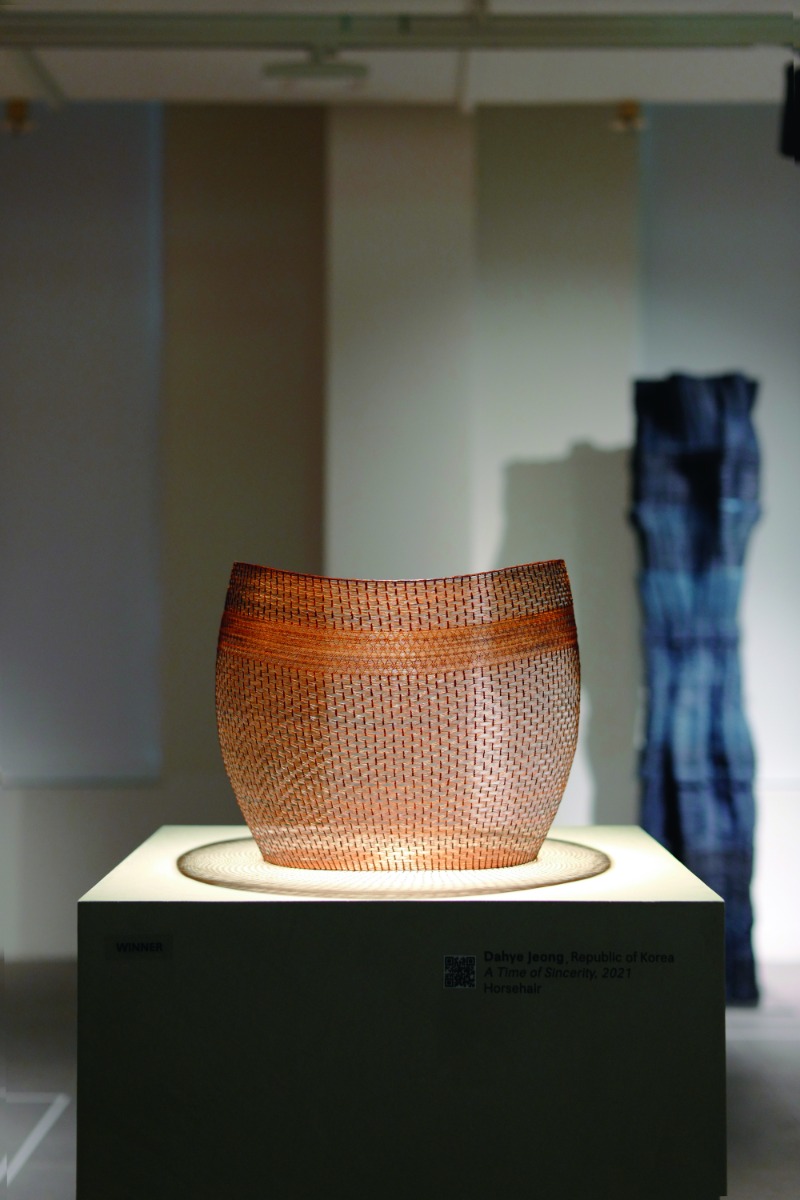
Jeong Da-hye’s “A Time of Sincerity,” winner of the 5th Loewe Foundation Craft Prize in 2022. In July 2022, the Seoul Museum of Craft Art hosted an exhibition showcasing the work of all the finalists from the event.
Courtesy of Soluna Craft Korea
True to its title, the vessel was the culmination of countless hours spent meticulously weaving strands of horsehair. It was crowned the winner of the prestigious Loewe Foundation Craft Prize from among more than 3,100 submissions by artists from 116 countries, an honor given to the work that best represents excellence, artistic merit, and newness in modern craftsmanship.
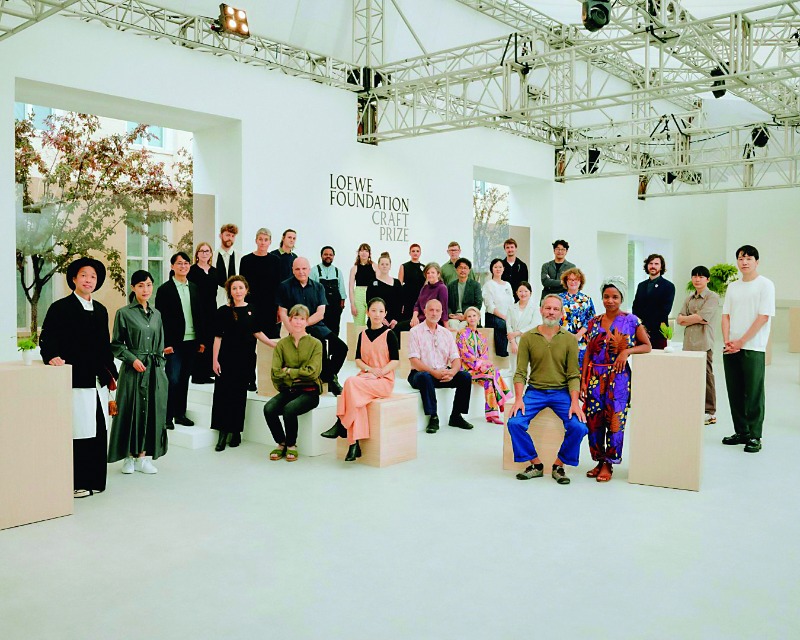
The 30 Loewe Foundation Craft Prize finalists from around the world photographed at the awards ceremony in June 2022.
Courtesy of Seoul Museum of Craft Art
Horsehair, from the mane or tail of a horse, is a material unfamiliar to the general public. Jeong, a 33-year-old rising artisan, diligently weaves this hair strand by strand topieces with distinctive forms. She threads the fine, translucent horsehair strands through a needle, and then hand-sews them into either practical items such as necklaces and hats, or elegant, decorative s reminiscent of earthenware artifacts.
Why were you drawn to horsehair?
Horsehair was a common material during the class-based society of the Joseon Dynasty (1392–1910). It was used to make headgear, such as gat (black formal hat), worn outdoors by noblemen, as well as manggeon (headband) and tanggeon (skullcap), which they had to wear at all times at home as dictated by Confucian customs. Horsehair was also a popular material for arm sleeves and other accessories.
My first encounter with horsehair was in 2017 when I participated in a project sponsored by the Korea Craft & Design Foundation. After that, I learned horsehair craft from the state-designated holder of the art of manggeonjang (horsehair headband making) and a certified trainee in the art of tanggeonjang (horsehair skullcap making), crafts which have both been named National Intangible Cultural Heritage.
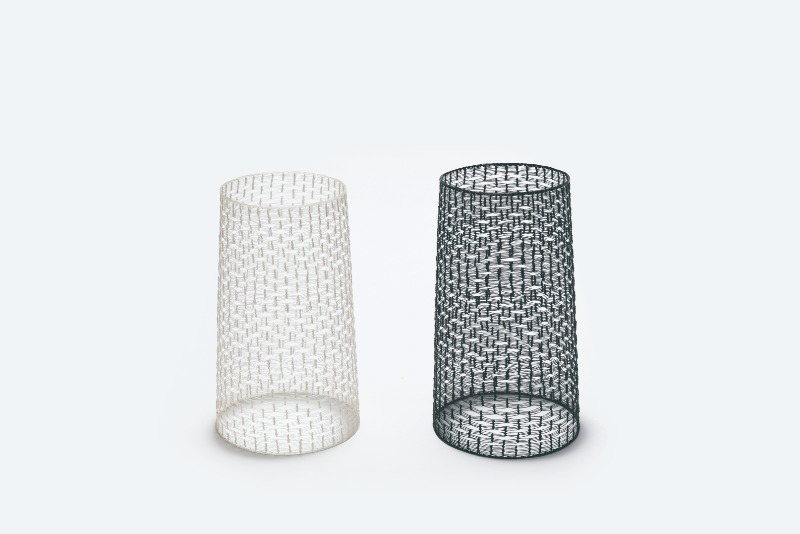
Arm sleeves made by the artist using traditional techniques. In the past, horsehair arm sleeves were worn on the forearm to prevent perspiration buildup in summer.
Courtesy of Soluna Craft Korea
You majored in sculpture. What prompted the change?
When I first started working with horsehair, I was experiencing extreme anxiety. I was worried whether starting graduate school in my late 20s was the right choice. On top of juggling school and craftwork on weekdays, I had to work parttime on weekends to make ends meet. To make a three-dimensionalwith horsehair, the short strands of hair have to be joined together one by one and then woven tightly with a needle. I found this simple, repetitive mode of labor quite fascinating. Seeing the flimsy strands of horsehair come together to become a solid , I gained courage and the confidence that I could also try the craft myself.
Making practical s from animal hair seems primitive and at the same time eco-friendly.
With sculpting, there tends to be a lot of waste, and I felt bad about that. But horsehair craft doesn’t produce much waste, and even if the work ends up being discarded, it isn’t harmful to the environment. That’s another aspect that really appeals to me. The frame used when weaving the horsehair is made from wood which I cut and carve myself.
Can you tell us about your work process?
The tools I use are horsehair, needles, scissors, and wooden frames. That’s it. The first thing I do is select horsehair that is smooth and uniform in thickness. I then carve the wooden frame into the desired shape. After that, I tie the horsehair around the frame and then weave the strands of hair tightly with a needle. When the weaving is complete, it is heat-treated in boiling water so that the horsehair becomes firm. Then the piece is air-dried and taken out of the frame. The process is fairly simple.
You’re originally from Jeju Island. Do you use horsehair from there?
An acquaintance who runs a ranch on Jeju does send me horsehair from time to time, but it’s not enough for my work. So, I also use horsehair imported from the United States, China, and Mongolia.
Horsehair is a natural material. Is it difficult to work with?
In a bundle of horsehair, only around 10–20 percent of the strands are suitable for use. When I first started, I used strands that weren’t in good condition, thinking it was a shame to see them go to waste. But that only resulted in the end product being substandard. Now I’m able to pick out good quality horsehair just by feeling it. Sitting and working all day is hard on my wrists and shoulders, but I guess that’s inevitable for craft artists.
What is your artistic direction?
At first, I primarily focused on creating goods that had a practical use, like necklaces and mobiles. But over time, I felt regret that I wasn’t faithfully acting on the inspiration I had received when I first encountered horsehair. I wanted to more effectively convey the unique traits of horsehair, namely that it emits a distinctive light when illuminated, and its strength when made into three-dimensional s.
I am particularly fond of prehistoric artifacts because I feel their simple forms convey the hand force of their creators. So, I thought I could better convey the powerful energy of horsehair through unpretentious vessels like comb-pattern pottery, and have since focused on creating s of various shapes and sizes that are reminiscent of earthenware.
“A Time of Sincerity” is so meticulously made. How long did it take to complete?
The piece was d with ancient earthenware vessels in mind. Since it was going to be submitted to an international competition, I wanted it to embody the historicity and beauty of traditional Korean horsehair craft, which is why I incorporated patterns used on the Joseon-era men’s hat sabanggwan. It took around two months to complete. The laborious production process is also an important message latent in my work. The title, “A Time of Sincerity,” can be viewed in the same context. It takes days and days of sincere labor to weave horsehair into a three-dimensional shape. This is a message to myself: in order to live an autonomous, independent life, each day should be lived diligently.
Has there been a memorable response from exhibition viewers?
A lot of people are surprised when they hear my age. Because my work is rooted in craft traditions, people expect me to be older than I am. I started out because I found working with horsehair fun, but I now feel a sense of mission. It’s a shame that a branch of our traditional craft is dying out. It’s akin to a part of our national spirit fading away. Since I’m only in my early 30s, horsehair craft will live on at least for the next few decades.
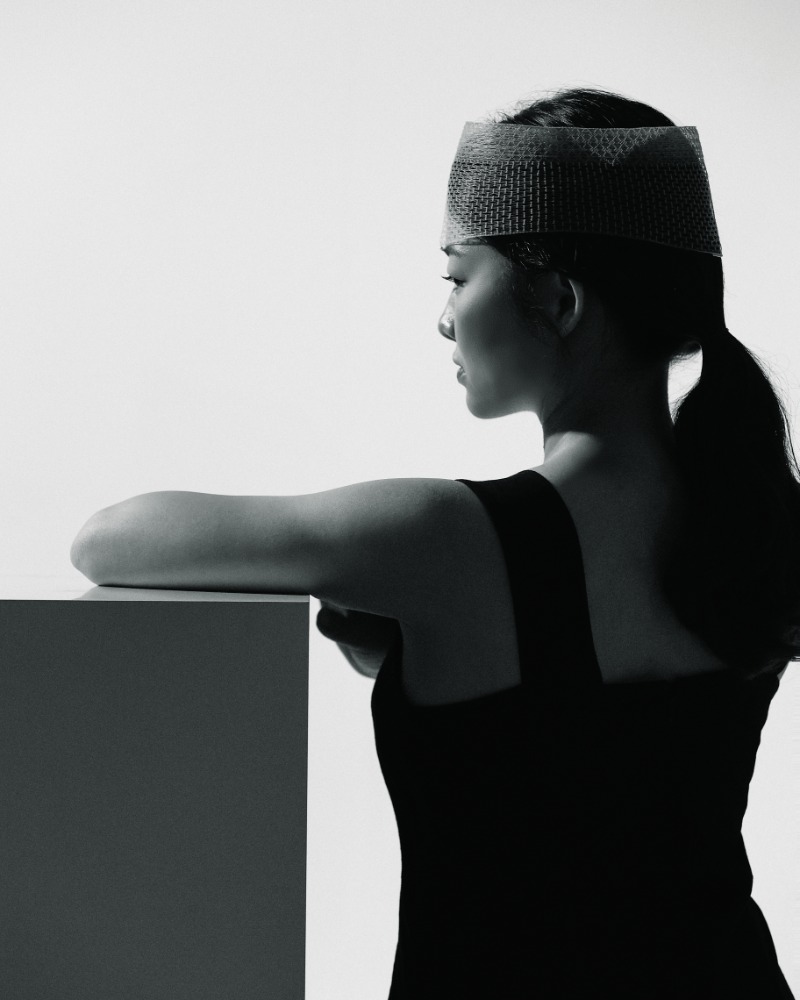
Having majored in sculpture and textiles in college and graduate school, respectively, Jeong Da-hye s work that is a modern aesthetic rendering of traditional horsehair craft. Worn by Jeong in this image, the manggeon was a headband worn by noblemen of the Joseon Dynasty to keep their hair out of their faces. The artist has refashioned the headband into a woman’s accessory.
Courtesy of Soluna Craft Korea
What is the artistic value of Korean crafts?
The one criterion I judge my work by is “me.” What I consider most important is whether I’m satisfied with it — whether it meets my standards. I think of Korean crafts in general in the same way. What we deem as quintessentially ours, what is beautiful in our eyes and by our standards rather than others’ — I believe that this will also appeal to the global market.
Kang Bo-ra Freelance Journalist